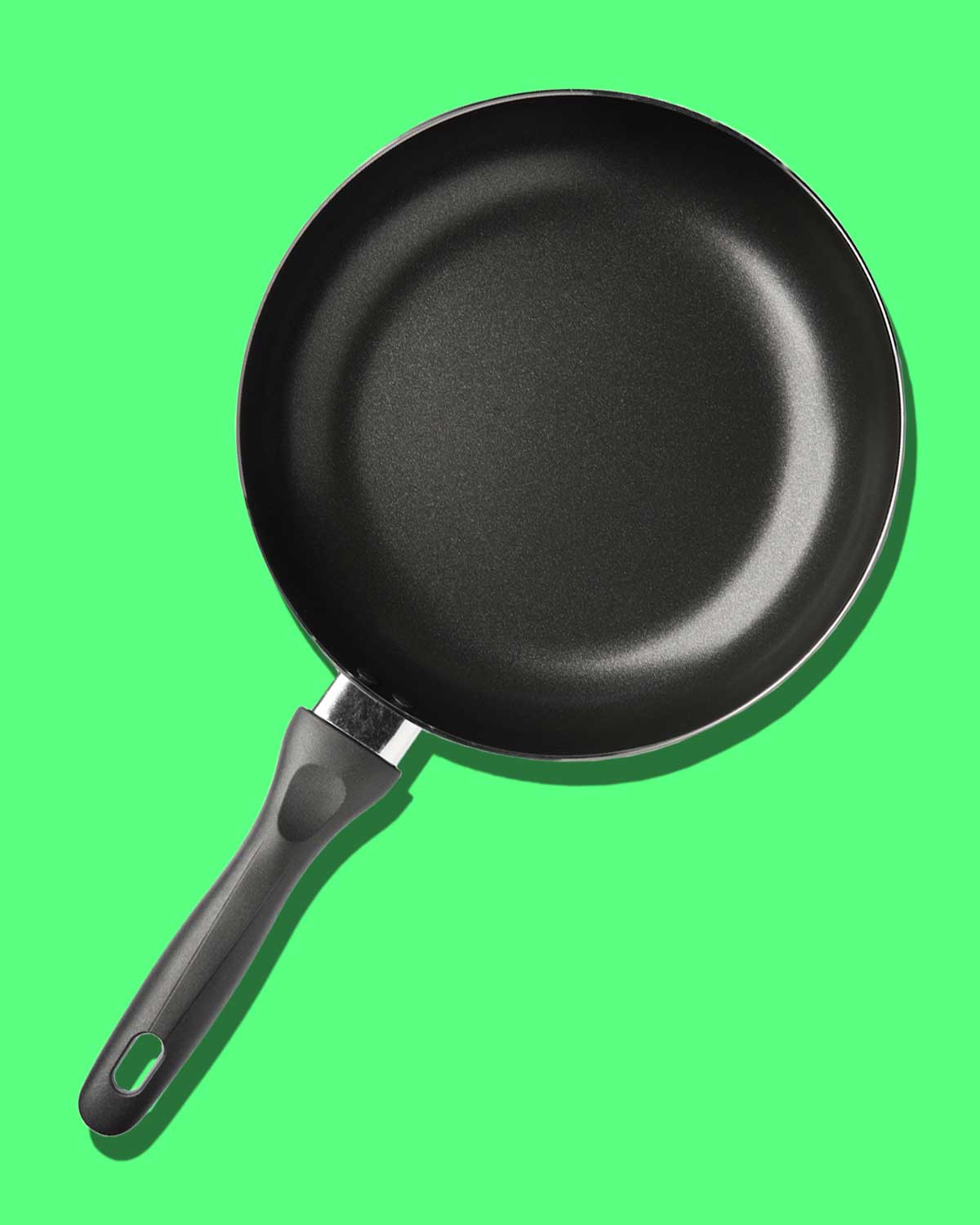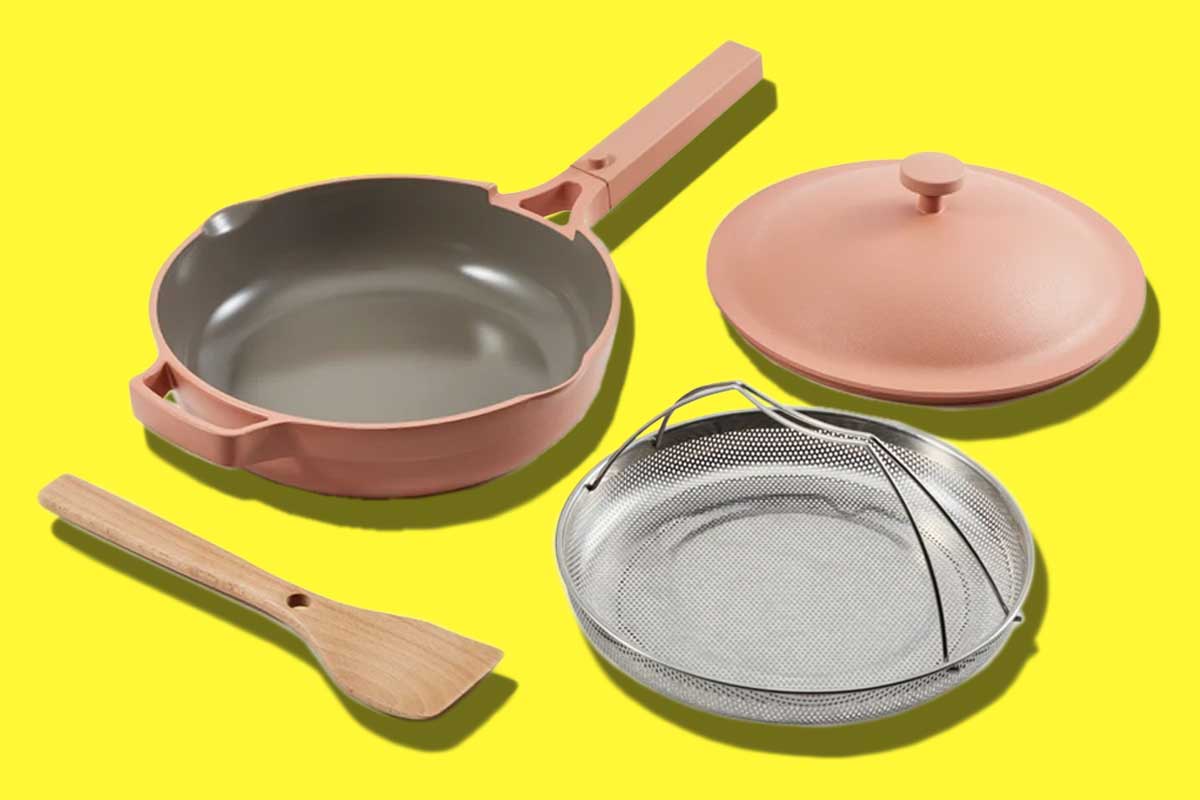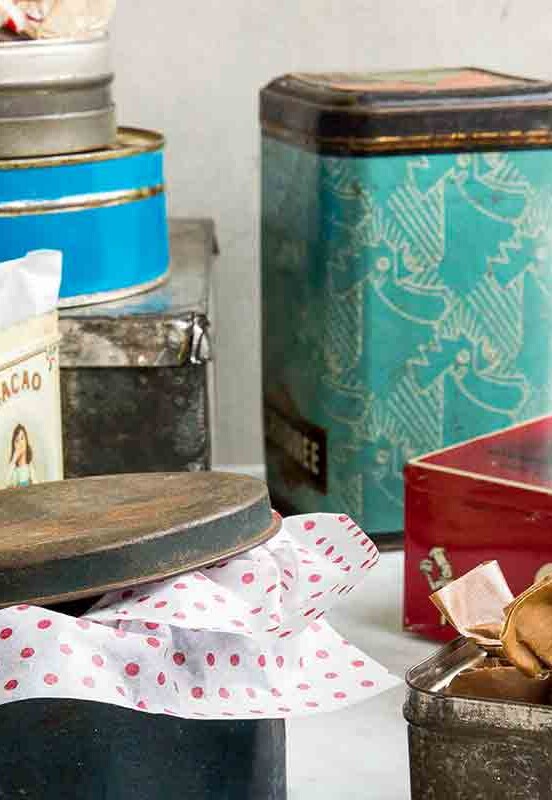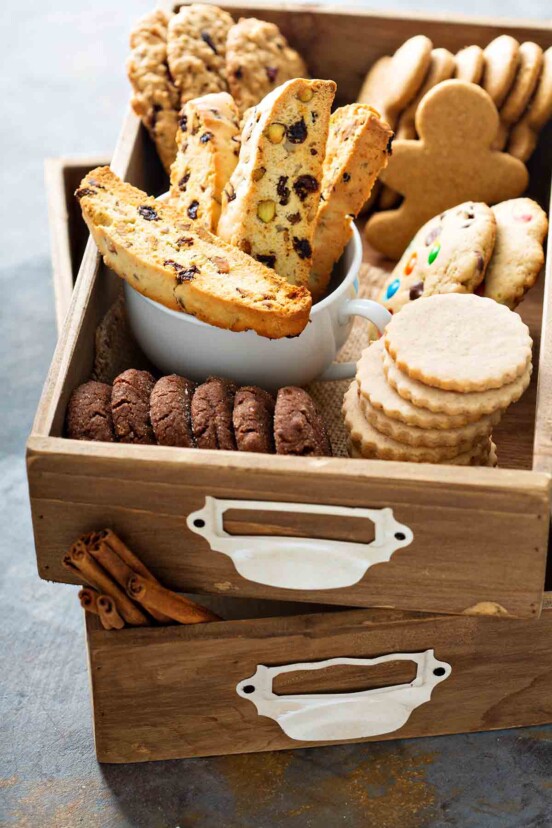
Confused by conflicting information regarding whether it’s safe to cook in a nonstick skillet? Here’s the latest science and advice.
Anyone who’s ever fried an egg or seared a fish fillet knows how much easier a nonstick surface makes the entire process. Nonstick cookware makes everything about cooking—including cleanup—considerably slicker. Which is exactly why it’s been a staple in many kitchens for decades.
But in recent years, debate about the safety of nonstick skillets has arisen. Mostly due to concerns about the chemicals often used to manufacture them. And when it comes to food safety, you need to consider more than just the ingredients you eat. There’s also the matter of the cookware you use.
What exactly is “nonstick” cookware?
Older styles of nonstick cookware were made with polytetrafluoroethylene (PTFE). Shortly after its discovery in 1938, manufacturers put PTFE to use in their skillets and pans, explains Dr. Samantha Radford, an exposure scientist who studies how people are exposed to toxins and the effects those chemicals have on human health. “This chemical repels both water and oils,” she says. “So it’s great for making a nonstick surface.” Radford is also the founder of The Evidence-Based Mommy website.
“While PTFE isn’t toxic on its own, it can become problematic if it’s mistreated,” says Radford. Overheating a nonstick surface causes it to break down and release toxic fumes. Radford adds, “Because petrochemicals are used in the making of these coatings, they’re not great for the environment.” Or for you.
“Chemical compounds such as polytetrafluoroethylene (PTFE) and perfluorooctanoic acid (PFOA), which are used in the production of Teflon pans, not only irreparably harm the environment, but can cause severe health damage,” says Casper Ohm, marine biologist and founder of Water-Pollution.org.uk, a website dedicated to raising awareness of manmade pollution in our oceans. Ohm looks at the question through the lens of both health and environmental protection.
When considering food preparation, he urges people to think about the materials in their pans. He notes that PFOA and PFOS (perfluorooctane sulfonate) have been linked to many illnesses. High cholesterol, kidney cancer, testicular cancer, thyroid disease, ulcerative colitis, and pre-eclampsia are just a few. A 2018 study conducted by researchers at Harvard University suggested that nonstick pans could even cause weight gain.
What to look for in a nonstick skillet
The vast majority of contemporary nonstick surfaces are no longer made from these materials. “Careful choice can hit all the marks of safety for both people and the environment,” says Ohm.
If you choose to shop for nonstick cookware, you’ll want to check the labels for certain potentially harmful components. California Proposition 65 includes an extensive list of chemicals that have been linked to cancer, birth defects, and reproductive health problems. All products sold in the state must be laboratory tested and labeled if they contain any of these potentially harmful elements. Per the Prop 65 test, you’ll want to seriously reconsider purchasing cookware that’s made with any of the following:
- lead
- per- and polyfluoroalkyl substances (PFAS)
- cadmium
- nickel
- chromium
- nanoparticles
- aluminum
How to safely use a nonstick skillet
Many studies indicate nonstick cookware should not be heated to 500°F (260°C) or higher. This roughly correlates to high heat on your stovetop. Some research suggests the threshold temperature should be much lower and in the medium heat range on your stovetop.
Do not heat your nonstick skillet without anything in it.
Cookware with a nonstick surface should be discarded as soon as it develops any scratches or surface marring. This includes ANY surface blemishes from spatulas or scouring pads.
A nonstick surface will break down with time. Skillets with nonstick coatings should be used regularly for no more than 5 years maximum.
Alternatives to nonstick cookware
There are other cookware surfaces that happen to be nonstick yet aren’t remotely similar to Teflon.
Ceramic

Although ceramic isn’t quite as nonstick or as long-lasting as Teflon, Radford explains that it’s much safer. Ohm adds that they have no harmful chemicals, even when overheated. “In addition, the nonstick quality allows for little to no use of oil,” he says, creating even healthier food.
Both Radford and Ohm noted that ceramic cookware’s durability is shorter compared to Teflon.
One example is Le Creuset’s line of ceramic-coated cast iron, which melds the functionality of cast iron with a ceramic coating. The brand has been revered for decades for its quality cookware in an array of hues.
Another example of ceramic cookware is the Always Pan. It hit the marketplace last year with much fanfare (and many Instagram posts, thanks to its aesthetically appealing look). However, the overall verdict from outlets including Wired, CNN, and Epicurious.com, is that it’s overrated and overpriced. (Although Epicurious.com noted that it’s a good investment for a specific type of cook.)
Cast-iron cookware

As for cast iron, as many home cooks are aware, it “will last forever as long as you don’t drop and crack it,” explains Radford. And once the surface is well-seasoned, it can be exceptionally nonstick. “I’ve seen people fry over-easy eggs and the eggs slide right out.”












I do have a couple teflon pans that are used stricktly for eggs and crepes. My general use pans are cast iron, enameled iron, carbon steel or good quality stainless steel. With the exeption of some aluminium sheet pans. Cast and steel pans do require a little maintenence, but nothing anyone isn’t capable of doing.
I have a couple cast pans that were my mothers. Well seasoned, well used and well loved. And smooth as glass on the inside. Nothing sticks to them. Not even fish.
You’re very lucky to have those, Vincent. They’ll last you forever.